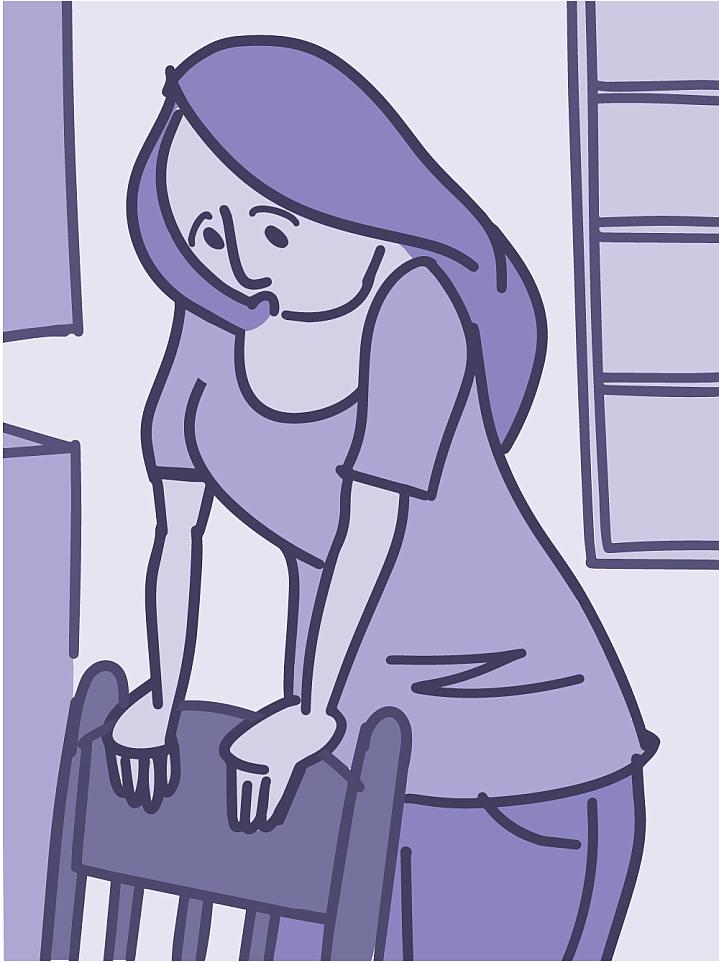Recognizing POTS
Learn to Spot This Mysterious Condition

A condition called POTS can have a huge impact on a person’s life. People with POTS often feel lightheaded or dizzy when standing up from a lying position. Their heart tends to race. They may even faint. Other symptoms can include extreme fatigue, shortness of breath, and trouble thinking.
“POTS can be quite debilitating. It can make it hard to do everyday activities, like attending work or school,” says Dr. Cheryl L. McDonald, who helps oversee NIH’s POTS research programs. “Some people even require the use of a wheelchair because they can’t stand or walk for long periods.”
POTS is an abbreviation for Postural Orthostatic Tachycardia Syndrome. Postural means it’s linked to your body’s position. Orthostatic is related to standing. Tachycardia means rapid heart rate. And syndrome means it’s a group of symptoms. (See the Wise Choices box.)
Normally, when a person stands up, gravity pulls blood down toward the legs and feet. This briefly reduces blood flow to the upper body, including the heart and brain. So the brain immediately sends signals that tighten the body’s lower blood vessels and make the heart pump faster. This pushes blood upward, so it can travel throughout the body.
But for people with POTS, these signals break down. The lower blood vessels don’t tighten enough upon standing, and the heart beats much faster than it should. The brain and other organs may not get enough blood, which can lead to fainting and other symptoms.
POTS can affect anyone at any age. It is most common among women, ages 15 to 50. Its causes are unknown. Researchers suspect there can be different causes, and each might require different treatments. Some data suggest that POTS may arise after major surgery, head injury, pregnancy, or viral illness.
POTS can be diagnosed by looking at your symptoms, heart rate, and blood pressure when you go from lying down to standing. Adults might have POTS if their heart rate rises by more than 30 beats a minute within 10 minutes of standing, without a big blood pressure change. For those under age 20, an increase of at least 40 beats a minute without a major blood pressure change could signal POTS. Symptoms may quickly improve by lying down.
Treatment often involves increasing salt intake and drinking plenty of water, which can boost blood volume. Blood volume is the total amount of fluid circulating around your body. Some patients benefit from medications that help to raise blood pressure or reduce heart rate. Compression socks can help keep blood from pooling in the legs. Exercise training and maintaining a regular sleep schedule may also help.
Many people—even some health care providers—have never heard of POTS. “But awareness has increased in recent years, particularly since POTS has been seen in patients who have had COVID-19,” McDonald says. The links between POTS and COVID-19 are still unclear, and researchers are working to learn more.
Despite increased awareness of POTS, it can be hard for some patients to get a diagnosis. “If you have symptoms that look like they could fit with POTS, it’s a good idea to discuss the possibility with your doctor,” McDonald says. “It’s perfectly acceptable to be your own advocate. You can show an article to your doctor and ask: Do you think I might have POTS?”
NIH Office of Communications and Public Liaison
Building 31, Room 5B52
Bethesda, MD 20892-2094
nihnewsinhealth@od.nih.gov
Tel: 301-451-8224
Editor: Harrison Wein, Ph.D.
Managing Editor: Tianna Hicklin, Ph.D.
Illustrator: Alan Defibaugh
Attention Editors: Reprint our articles and illustrations in your own publication. Our material is not copyrighted. Please acknowledge NIH News in Health as the source and send us a copy.
For more consumer health news and information, visit health.nih.gov.
For wellness toolkits, visit www.nih.gov/wellnesstoolkits.



